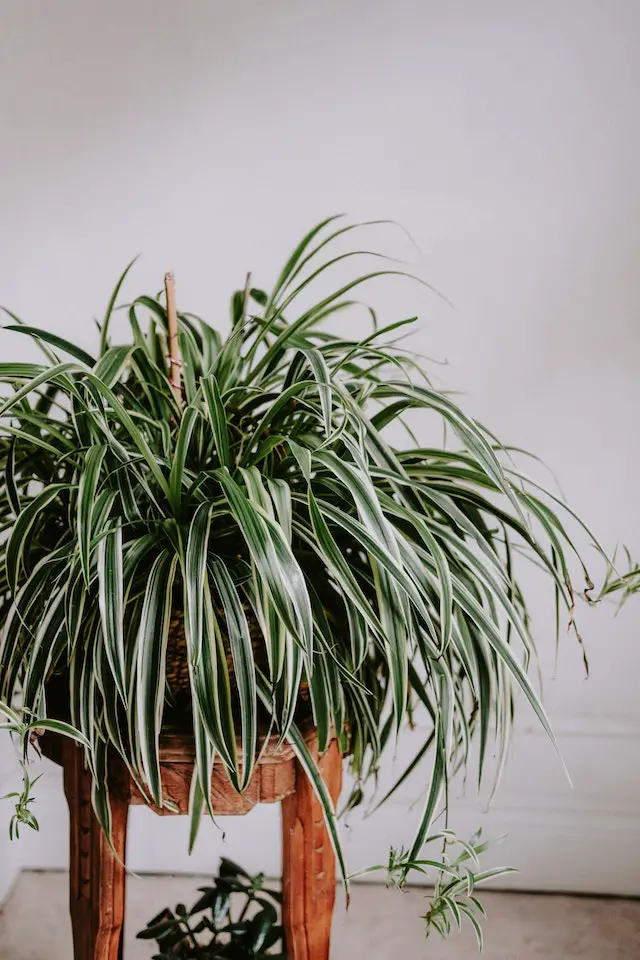Looking to expand your spider plant family? Wondering how to make more spider plant babies? You’ve come to the right place! In this article, we’ll share a simple and effective method to help you propagate your spider plant and create new adorable green offspring.
Whether you’re a seasoned plant parent or just starting your plant journey, this step-by-step guide will show you exactly how to make more spider plant babies, allowing you to enjoy the beauty and abundance of these popular houseplants.
So let’s dive in and learn the secrets of spider plant propagation together!
How to Make More Spider Plant Babies: A Comprehensive Guide
Spider plants, with their cascading foliage and easy care requirements, have become incredibly popular houseplants. They not only add a touch of greenery to our homes but also have air-purifying qualities.
One of the fascinating aspects of spider plants is their ability to produce “babies” or plantlets, which can be propagated to create more spider plants. In this guide, we’ll explore various methods to help you make more spider plant babies and expand your collection. Let’s get started!
The Importance of Propagating Spider Plant Babies
Propagating spider plant babies serves multiple purposes. It allows you to:
– Expand your spider plant collection: By propagating spider plant babies, you can increase the number of plants in your collection, creating an appealing indoor jungle.
– Share plants with friends and family: Spider plants make excellent gifts, and propagating babies is an ideal way to share the joy of gardening with loved ones.
– Save money: Rather than purchasing new spider plants, propagating babies allows you to grow new plants at no additional cost.
Understanding Spider Plant Reproduction
Before diving into the propagation methods, let’s take a moment to understand how spider plants reproduce naturally. Spider plants reproduce by sending out long stems that bear small, white flowers.
These flowers develop into plantlets, commonly known as spider plant babies, which grow at the end of the flower stems. These plantlets have the potential to root and grow into new spider plants.
When to Propagate Spider Plant Babies
The best time to propagate spider plant babies is during their active growing season, which typically falls between spring and summer.
During this period, the plant is in its prime growth phase and exhibits increased root development, making it easier for the babies to establish themselves.
What You’ll Need
To successfully propagate spider plant babies, gather the following supplies:
– Sharp scissors or pruning shears
– Small pots or containers
– High-quality potting soil
– Watering can or spray bottle
– Rooting hormone (optional)
Methods for Propagating Spider Plant Babies
There are several ways to propagate spider plant babies, each with its own pros and cons. We’ll explore the most popular methods below:
Water Propagation
Water propagation is a simple and effective method for propagating spider plant babies. Follow these steps to propagate spider plant babies in water:
- Select a healthy spider plant baby with roots measuring at least 2-3 inches in length.
- Cut the baby off from the parent plant using sharp scissors or pruning shears.
- Place the spider plant baby in a jar or glass of water, ensuring that the roots are submerged.
- Position the jar or glass in a well-lit area, away from direct sunlight.
- Change the water every few days to keep it fresh and oxygenated.
- After a few weeks, the roots will grow longer and stronger.
- Once the roots are well-developed, carefully transfer the baby to a small pot filled with potting soil.
- Water the newly potted spider plant baby thoroughly and place it in a spot with bright, indirect light.
- Continue to care for the plant by watering it regularly and providing appropriate light conditions.
Soil Propagation
Soil propagation is another popular method for propagating spider plant babies. To propagate spider plant babies in soil, follow these steps:
- Identify a spider plant baby with well-developed roots.
- Using sharp scissors or pruning shears, cut the baby off from the parent plant.
- Prepare a small pot or container with high-quality potting soil.
- Create a small hole in the soil to accommodate the baby’s roots.
- Place the spider plant baby in the hole, ensuring the roots are covered with soil.
- Gently press the soil around the base of the plantlet to secure it.
- Water the newly potted spider plant thoroughly.
- Position the pot in a location with bright, indirect light.
- Continue to water the plant regularly, allowing the soil to dry slightly between waterings.
Troubleshooting Common Issues
While propagating spider plant babies is generally a straightforward process, a few issues may arise along the way. Here are some common problems and their solutions:
Root Rot
Overwatering can lead to root rot, causing the roots to become mushy and black. To prevent root rot:
– Ensure that the soil is well-draining and never becomes waterlogged.
– Water the plant only when the top inch of soil is dry to the touch.
– Consider using a well-draining potting mix or adding perlite to improve drainage.
Lack of Root Growth
If the spider plant baby fails to develop roots or the roots appear weak, try these troubleshooting tips:
– Ensure the baby has adequate light – bright, indirect light is ideal.
– Consider using a rooting hormone to stimulate root growth.
– Maintain a consistent watering schedule, neither overwatering nor underwatering the plant.
Yellowing Leaves
Yellowing leaves on the spider plant baby may indicate various issues, such as overwatering, underwatering, or nutrient deficiencies. Check the following:
– Adjust your watering schedule and avoid both overwatering and underwatering.
– Ensure the plant receives sufficient indirect light.
– Consider using a balanced fertilizer to provide essential nutrients.
By following these methods and troubleshooting tips, you can successfully propagate spider plant babies and enjoy the satisfaction of growing your indoor garden. Whether you choose to propagate in water or soil, the process remains simple and rewarding. So, unleash your green thumb and let those spider plant babies thrive in your home, adding beauty and freshness to your living space. Happy gardening!
Frequently Asked Questions (FAQs)
The easiest method to propagate spider plant babies is by using the plantlets that grow from the mother plant’s stems.
Yes, you can propagate spider plant babies in water. Simply cut a spider plant runner with plantlets and place it in a jar with water until roots develop.
Absolutely, spider plant babies can be propagated directly in soil. Take a plantlet and place it in a small pot with well-draining soil.
Spider plant baby cuttings should be watered when the top inch of soil feels dry. Avoid overwatering as it can lead to root rot.
Spider plant babies usually root within a few weeks, but it can take longer depending on the environmental conditions.
The ideal temperature for spider plant baby propagation is between 65°F and 75°F (18°C to 24°C). Spider plants thrive in moderate temperatures.
Yes, you can use a balanced liquid fertilizer diluted to half strength to encourage spider plant baby growth. Apply the fertilizer once a month during the growing season.
Final Thoughts
Spider plants are incredible indoor plants that are easy to care for and propagate. To make more spider plant babies, start by locating the plantlets that grow on long stems. Place a small pot filled with well-draining soil near the mother plant. Gently press the plantlet into the soil, ensuring it is secure. Water regularly and provide ample sunlight for the new plant to thrive.
Within a few weeks, roots will develop, and the plantlet will grow into a healthy spider plant. Making more spider plant babies is a simple and rewarding process that allows you to expand your green collection effortlessly.
Auto Amazon Links: No products found.
Perfect Plants Christmas Tree Saver 8oz. | Easy Use Xmas Tree Preserver Food | Have Healthy Green Christmas Trees All Holiday Season
$9.97 (as of December 12, 2025 05:04 GMT +00:00 - More info- Product prices and availability are accurate as of the date/time indicated and are subject to change. Any price and availability information displayed on [relevant Amazon Site(s), as applicable] at the time of purchase will apply to the purchase of this product.
Rocky Mountain Goods Christmas Tree Food - 8 oz Tree Preservative - Reduce Needle Drop - Greener Scent - Fir, Pine, Spruce Trees - Extend Tree Life
$9.95 (as of December 12, 2025 05:04 GMT +00:00 - More info- Product prices and availability are accurate as of the date/time indicated and are subject to change. Any price and availability information displayed on [relevant Amazon Site(s), as applicable] at the time of purchase will apply to the purchase of this product.
VICAMB 39.3 Inch Christmas Tree Watering Funnel,Christmas Tree Watering System Device,Long Tree Watering Funnel Spout for Indoor Outdoor Xmas Tree
$16.99 (as of December 12, 2025 05:04 GMT +00:00 - More info- Product prices and availability are accurate as of the date/time indicated and are subject to change. Any price and availability information displayed on [relevant Amazon Site(s), as applicable] at the time of purchase will apply to the purchase of this product.
FirEver Pure Christmas Tree Food | Preserver Additive & Season Extender for Live Xmas Trees | Keep It Green, Reduce Needle-Drop | Miracle Freshness (8 oz)
$14.99 (as of December 12, 2025 05:04 GMT +00:00 - More info- Product prices and availability are accurate as of the date/time indicated and are subject to change. Any price and availability information displayed on [relevant Amazon Site(s), as applicable] at the time of purchase will apply to the purchase of this product.
EZMeetU Christmas Tree Watering Funnel, 47 Inch Flower Shape Adjustable 6 Section Design, Christmas Tree Watering System, Christmas Tree Waterer, Long Funnel Wide Opening Reusable, Plant Watering Tool
$16.99 (as of December 12, 2025 05:04 GMT +00:00 - More info- Product prices and availability are accurate as of the date/time indicated and are subject to change. Any price and availability information displayed on [relevant Amazon Site(s), as applicable] at the time of purchase will apply to the purchase of this product.
Snow Joe Premium Enviro Blend Ice Melt, Green-Coated Deicer Crystals, 50 lb - Safer Melter for Vegetation, Concrete & Metals w/ Anti-Corrosion Calcium Magnesium Acetate
$32.97 (as of December 11, 2025 19:12 GMT +00:00 - More info- Product prices and availability are accurate as of the date/time indicated and are subject to change. Any price and availability information displayed on [relevant Amazon Site(s), as applicable] at the time of purchase will apply to the purchase of this product.
Muddy Mat® Shown on TV Super Absorbent Microfiber Dog Door Mat for Muddy Paws, Non-Slip Washable Pet Rug, Quick Dry Chenille Entryway Carpet, Machine Washable Indoor Outdoor mat, Grey 30"x19"
$24.95 (as of December 11, 2025 19:12 GMT +00:00 - More info- Product prices and availability are accurate as of the date/time indicated and are subject to change. Any price and availability information displayed on [relevant Amazon Site(s), as applicable] at the time of purchase will apply to the purchase of this product.
ivtivfu Rolling Grill Basket, Removable Wooden Handle, 304 Stainless Steel, Nesting BBQ Tools, Smoker Grilling Accessories for Vegetable, Outdoor Cooking Camping, Birthday Gifts for Men Dad Husband
$25.99 (as of December 11, 2025 19:12 GMT +00:00 - More info- Product prices and availability are accurate as of the date/time indicated and are subject to change. Any price and availability information displayed on [relevant Amazon Site(s), as applicable] at the time of purchase will apply to the purchase of this product.
XXXFLOWER Plant Terrarium with Wooden Stand, Air Planter Bulb Glass Vase Metal Swivel Holder Retro Tabletop for Hydroponics Home Garden Office Decoration - 3 Bulb Vase
$18.98 (as of December 11, 2025 19:12 GMT +00:00 - More info- Product prices and availability are accurate as of the date/time indicated and are subject to change. Any price and availability information displayed on [relevant Amazon Site(s), as applicable] at the time of purchase will apply to the purchase of this product.
Zevo Flying Insect Trap Official Refill Cartridges - Fits Both Zevo Trap & MAX Indoor Fly Trap - Authentic Trap+Lock Technology to Catch Gnats, House & Fruit Flys (4 Official Refill Cartridges)
$14.97 (as of December 11, 2025 19:12 GMT +00:00 - More info- Product prices and availability are accurate as of the date/time indicated and are subject to change. Any price and availability information displayed on [relevant Amazon Site(s), as applicable] at the time of purchase will apply to the purchase of this product.











